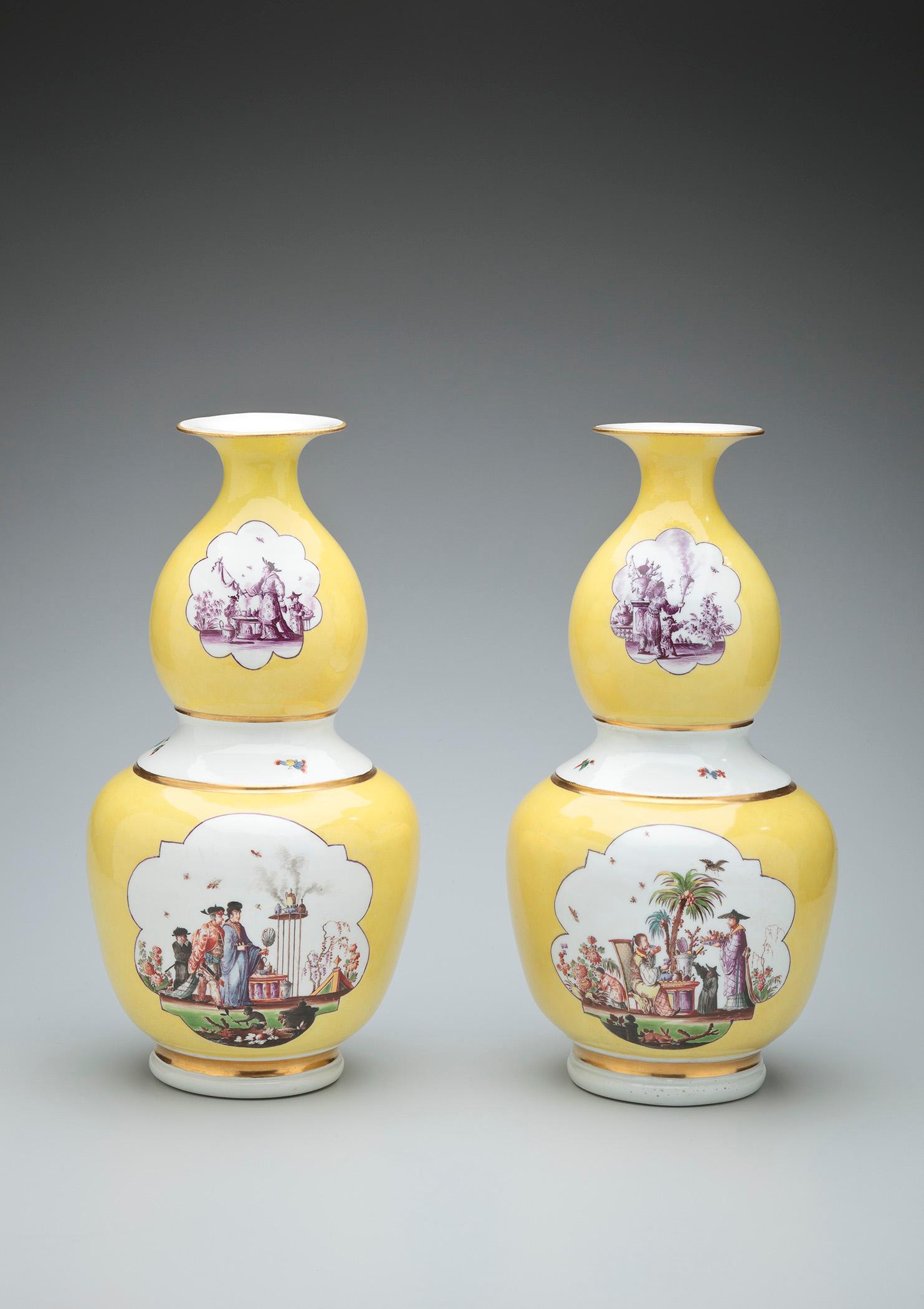Pair of Vases with Chinoiseries
Manufacturer: Meissen Porcelain Manufactory (German, 1710-present)
Artist: attributed to Adam Friedrich von Löwenfinck , (painter) (German, 1714 - 1754)
Date: about 1735-1738
Dimensions:
H: 15 in. (38.1 cm)
Medium: Porcelain, enamel and gilt decoration
Classification: Ceramics
Credit Line: Purchased with funds from the Florence Scott Libbey Bequest in Memory of her Father, Maurice A. Scott
Object number: 1988.101
Label Text:The Chinese-style scenes on these vases are attributed to the famous ceramic decorator Adam Friedrich von Löwenfinck. Considered one of the most skilled painters of porcelain, he is known for fine, delicate lines and masterful control of enamels. The floral panels are painted with “Indian flowers”—a decoration introduced at Meissen in the 1720s that was inspired by the Kakiemon style of Japanese porcelain. Toledo’s vases are marked with the monogram AR (Augustus Rex), which was used for pieces made both for the personal use of and as gifts commissioned by King Augustus II of Poland (1670–1733).
Chinese porcelain was prized in Europe from the 1500s, and huge quantities of gold went to China to pay for the desired desirable?wares. Consequently, numerous attempts were made to duplicate the elusive material in Europe. The first European hard-paste, or true, porcelain was developed in Dresden from 1708 by scientist and inventor Ehrenfried Walther von Tschirnhaus. In 1709 alchemist Johann Friedrich Böttger discovered the materials required to produce white, translucent, high-fired porcelain. This discovery was to have profound consequences for the entire European ceramic industry.
Chinese porcelain was prized in Europe from the 1500s, and huge quantities of gold went to China to pay for the desired desirable?wares. Consequently, numerous attempts were made to duplicate the elusive material in Europe. The first European hard-paste, or true, porcelain was developed in Dresden from 1708 by scientist and inventor Ehrenfried Walther von Tschirnhaus. In 1709 alchemist Johann Friedrich Böttger discovered the materials required to produce white, translucent, high-fired porcelain. This discovery was to have profound consequences for the entire European ceramic industry.
Not on view
In Collection(s)





